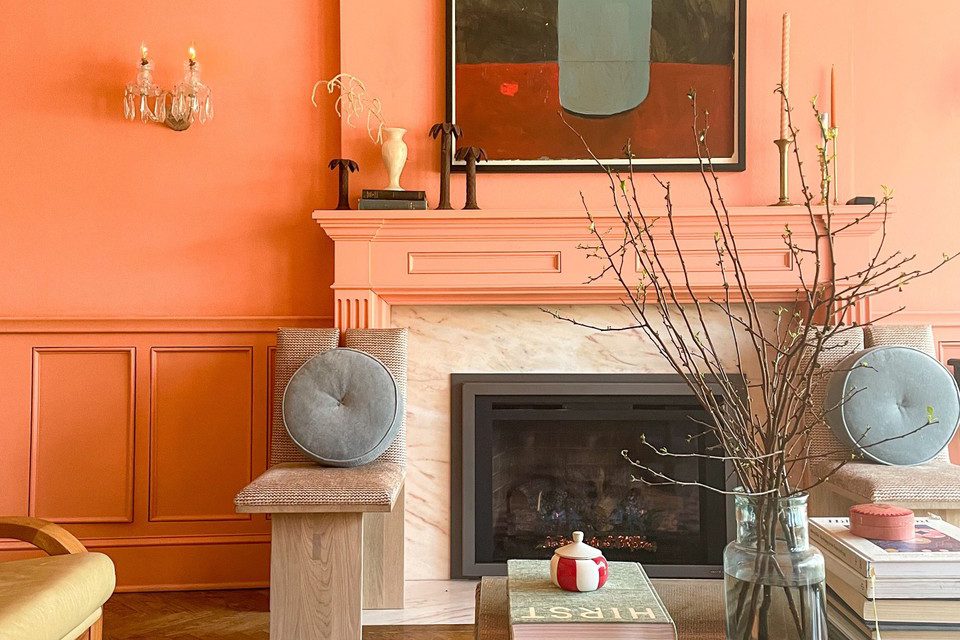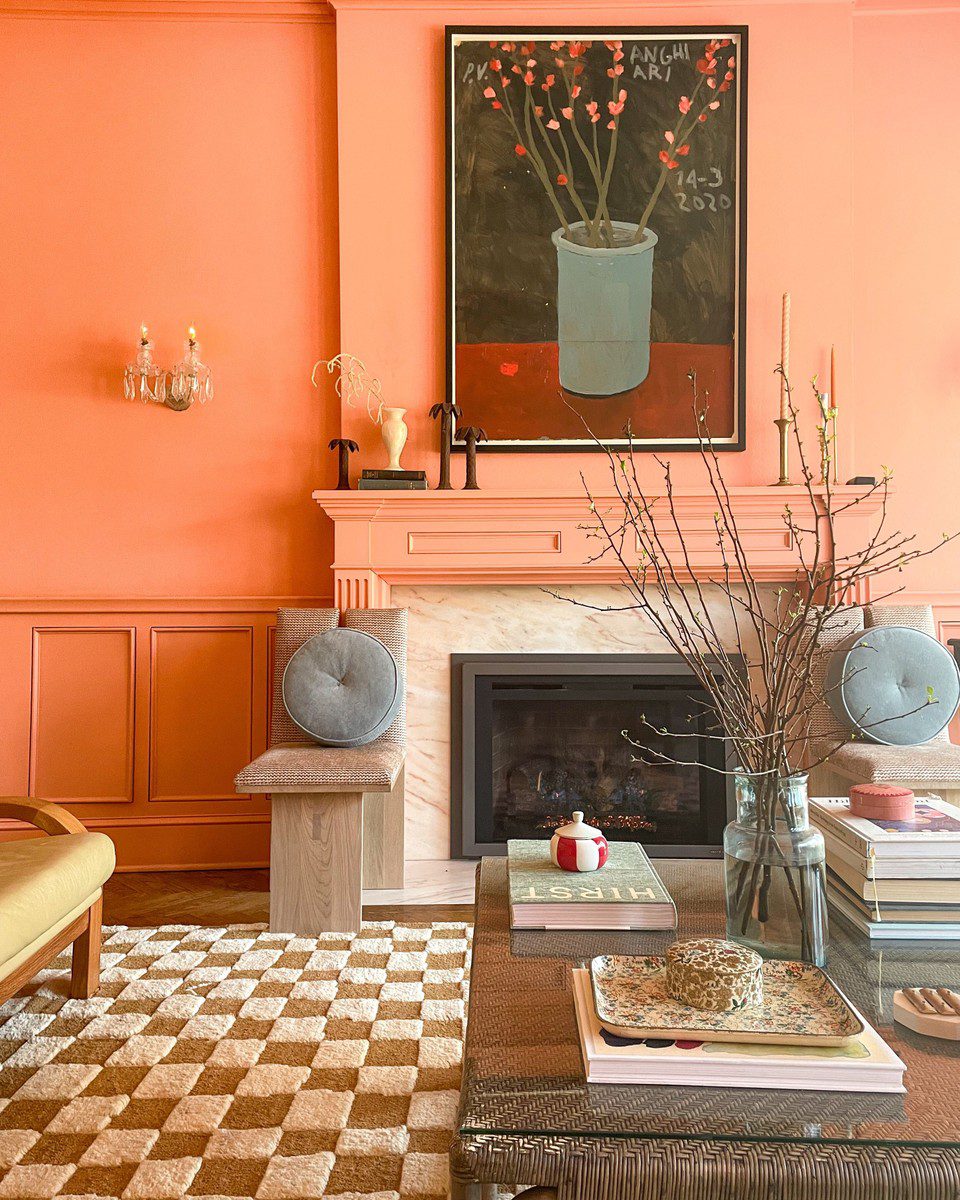

Editor’s Note: Honing our personal interior design style is an ever-evolving process. We hope this post, originally published in January of 2021, helps you design a home you love at any budget.
My favorite homes are those that look unapologetically like the people who live there. You feel like you’re with the person whenever you’re in their space. This post is about getting your mind prepped for exploring your own personal interior design style so you can start making changes to your space TODAY, often without spending a dime.
We can save photos on Instagram and study print-ready homes in glossy magazines, but ultimately, there is nothing particularly formulaic about defining personal style. So why can it be so hard to characterize, and even harder to put into practice? In my experience, it’s because when it comes to designing our own spaces, we cannot hold ourselves to the standards of an art director staging a photo shoot for Architectural Digest. Defining our personal design style, and executing it within our homes, involves much more individualized nuance and intentional self-reflection.
Stop telling yourself your personal interior design style isn’t stylish.
Instead, give yourself permission to explore what you love. Below are my tips for doing just that.
Step 1: Quit the comparison game.
Design is all in the eye of the beholder. There are so many factors that go into why you’re drawn to a particular design choice, and sometimes being on Instagram and seeing decor images side-by-side can make you lose track of what you like or what you think is cool. Instagram can, at times, ruin our ability to see the things we love for what they are, and moving into my home has helped show that to me.
That is why the first step is to be aware of our proclivity to compare. Denying yourself what you like just because you’re not sure what other people will think is something I see a lot in the design arena and it makes me really sad. There’s a time and a place for pulling inspiration from others’ designs, but if your tendency to compare is holding you back from making your own decisions for yourself, that’s when you know it may be time to adjust your approach.
Before you can move into a more personal expression of home design, the goal must be to learn to stop caring what other people think of your design decisions and to instead ask, Does it feel good to me?
Before you can move into a more personal expression of home design, the goal must be to learn to stop caring what other people think of your design decisions and to instead ask, Does it feel good to me?
Step 2: Accept where your space is at right now.
Try to move toward accepting what you’re currently working with. Sometimes it helps to remember that even design projects with the largest budgets require concessions and second choices. In fact, I don’t know any one person who lives in a house they selected from top to bottom. When you’re open to appreciating the current design of your space, the problems you’re solving are very different from thinking, I don’t like this one thing (or these ten things) so the entire design is all shit.
One common example I tend to see relates to homes that are new builds. Are you living in a new build but love the character of century-old homes? Try to reframe your approach to your current space. A blank slate can often be the perfect opportunity to breathe new life into an antique heirloom. When you remove a dark and drab piece like an ornate sofa and put it in a modern space, it becomes something completely new.
Even if your end goal is to completely redesign your home from top to bottom, that process takes time, and for now, you’re living with your space as it currently is. There will always be a way to appreciate the current design of your home, if only you’re willing to look for it. And who knows—that keen sense of appreciation may help inform certain elements that can ultimately be enhanced rather than replaced.
Step 3: Be curious about what you’re drawn to.
This is where you can let the fun begin. Start to take note of what captures your attention. Be curious as you explore your daily world. Save links of things that have nothing to do with your home’s design at all—a book cover, the color in a piece of artwork, a skirt that makes you feel like a million bucks.
Make lists of the things that stand out to you, whether it’s a particular aspect of a home you see on your daily walk or a styling technique that stands out to you in a magazine. When you’re ready, collect everything you’ve saved. Print out these visuals. Look at them together. Begin to look for similarities and patterns. The key here is being really intentional about setting aside space to get to the core of what you like, and that requires time and personal observation.
The key here is being really intentional about setting aside space to get to the core of what you like, and that requires time and personal observation.
A personal example: After doing this exercise myself, I realized that I LOVE a bold stripe in red, especially when blue, green, and yellow are in play. Funnily enough, none of those elements existed in my home at the time, even though I had saved countless pictures of that combination on my Pinterest boards, years prior to this exercise. We even got married in a room filled with color and pattern. How was that aesthetic not incorporated into my daily life? I hadn’t even THOUGHT about bringing the characteristics I was drawn to in daily life and my decor choices into the same conversation.
Step 4: Decide what isn’t working.
The biggest issue that happens with this step is that we mistake what we don’t like with what isn’t working. The goal is to live in a home where beauty and functionality can coexist, but in most cases, we need a plan for focusing on our most pressing needs so we can start feeling more comfortable in our homes.
This way, you can identify and honor both the things you do like and the things you don’t like in a way that makes it feel less pressing to change each of the latter items all at once. Accepting both can help you see a way forward to enhance the things you do like and make a plan to change what isn’t functional for your lifestyle.
You can’t keep all of this info in your head. Get granular with these items and write them down. Keep a notebook with you for a week as you go through your daily routines within the home. Can’t stand where the dishwasher is? Write that down. Does the layout of your living room clash with the natural traffic flow in your household? Write that down. Does the tile floor show spots that you can’t help but obsess over? Write it down. Is the layout of your pantry unsightly but really perfectly functional? Make note of that too. The bigger an annoyance, the more important it will be for you to focus your efforts there.
You can identify and honor both the things you do like and the things you don’t like in a way that makes it feel less pressing to change each of the latter items all at once.
Step 5: Ask yourself questions (à la “design prompts”).
We cannot all be interior designers, nor can we all afford to hire one. But we CAN ask ourselves the same questions an interior designer would and do our best to answer them honestly.
Ultimately, there’s no one but yourself who can decide what you want the design of your space to be. Asking yourself these intentional questions can help you hone in on your individual design style.
Let’s start with a few of the biggies:
- What aspects of my home as it is currently am I most drawn to?
- How do I want my space to feel?
- What are the similarities between the photos I’ve saved on Instagram and Pinterest, and the things I’ve noticed I liked in my daily life?
These questions will help you get to a place where you’re ready to make design decisions. Resist the temptation to second guess or poke holes in your answers. We can like and appreciate all kinds of design styles. What works best for your LIFE and your SPACE is the focus. We don’t order everything off the menu, so focus mainly on what is exciting in front of you, not the next shiny object you scrolled past on the ‘gram.
Print out the photos you’ve saved that correspond to the feelings you listed. Wanting a warm, layered home means you can set aside those stark, minimal inspiration images for another day or another period in your life. Follow your feelings first, then let the constraints of your home’s style and budget do the next round of editing.
Asking yourself questions and figuring out how to answer them rather than immediately turning to the advice of others is such a crucial skill to develop. As you move through these exercises and ask yourself these questions, you should begin to see a picture come together.
Step 6: Make one small change at a time.
Eventually, you need to make a decision and try something out. If you’re realizing you have a very different personal style than what you’ve purchased in the past, start really small. This isn’t about starting from scratch; it’s about making small changes from this moment forward.
The decisions we make when personal style is top of mind are emotional. They’re not something we’ve waxed and waned over. You might ask yourself why you’re drawn to a particular color if it makes you nervous, but don’t confuse what your heart is drawn to with something that may not “fit” into one particular style or another.
The general rule for decorating personal spaces is that the individual curating the items and designing the space IS the through line. YOU are the connective tissue between your choice of sofa and rug. What we like often jives together in a way that clashes ever so slightly, rather than looking completely out of place. This is something that you’ll find more confidence in over time.
The general rule for decorating personal spaces is that the individual curating the items and designing the space IS the through line. YOU are the connective tissue between your choice of sofa and rug.
Unless it’s a massive undertaking like a kitchen remodel, our decisions in these areas don’t necessarily need to be so precious. Start small and keep moving forward. Select pillows in shades you pull from the color of your favorite scarf. Study a painting you love and ask yourself why certain colors work well together. If you don’t know where to start, think of your closet. Think of how all your pieces go with one another. Layering your home with objects you like is a very similar thought process to putting together an outfit. Relax. Try something new. Have fun.
And if you’re really scared to make a purchase like a brightly colored throw in a shade that scares you, first look for a piece of clothing you own in a similar shade. Throw it over your couch. See how it looks. Get creative and hold space for a little bit of suspense. You can make it work!
Step 7: Make peace with the doubts.
Understand that doubts will arise along the way. That’s okay. Remember the why of how you came to your decision to update a design in the first place and do your best to stay the course.
As I write this, our house is in the middle of so many small changes. If I judged the color of a door I selected with our current flooring in mind, I wouldn’t leave myself the opportunity to see my vision through. And no one will ever think a space looks as unfinished as you do. I promise you. People are not judging your space like you are.
And that is why the delay in judgment is so important. Sometimes it takes time for us to acclimate to a new design. Give yourself the space to process the changes as you go. And if you need to, try to protect your design and don’t share it with too many others until what you want to do in the space is done.
Personal style cannot be replicated, only coaxed from your personal experiences, likes, and dislikes. We let it become part of our lives when we stop setting limitations for what is possible in our spaces, deny the need for rooms to be “finished,” and get creative with what we have in front of us.
From the way someone styles a side table to the art they select to the collections they display on shelves, their design is not about being right or wrong, in or out. Their design is a reflection of what they love. Period.
Home is where life unfolds, and style is how we delight in expressing what makes us unique. Personal interior design style isn’t predicated by budget or architectural elements. It’s rarely finished evolving and it rarely stays stagnant. But we all know what it feels like to be in the presence of a room styled by an individual who had a vision, no matter how subtle it may be. From the way someone styles a side table to the art they select to the collections they display on shelves, their design is not about being right or wrong, in or out. Their design is a reflection of what they love. Period.

Kate is currently learning to play the Ukulele, much to the despair of her husband, kids, and dogs. Follow her on Instagram at @witanddelight_.